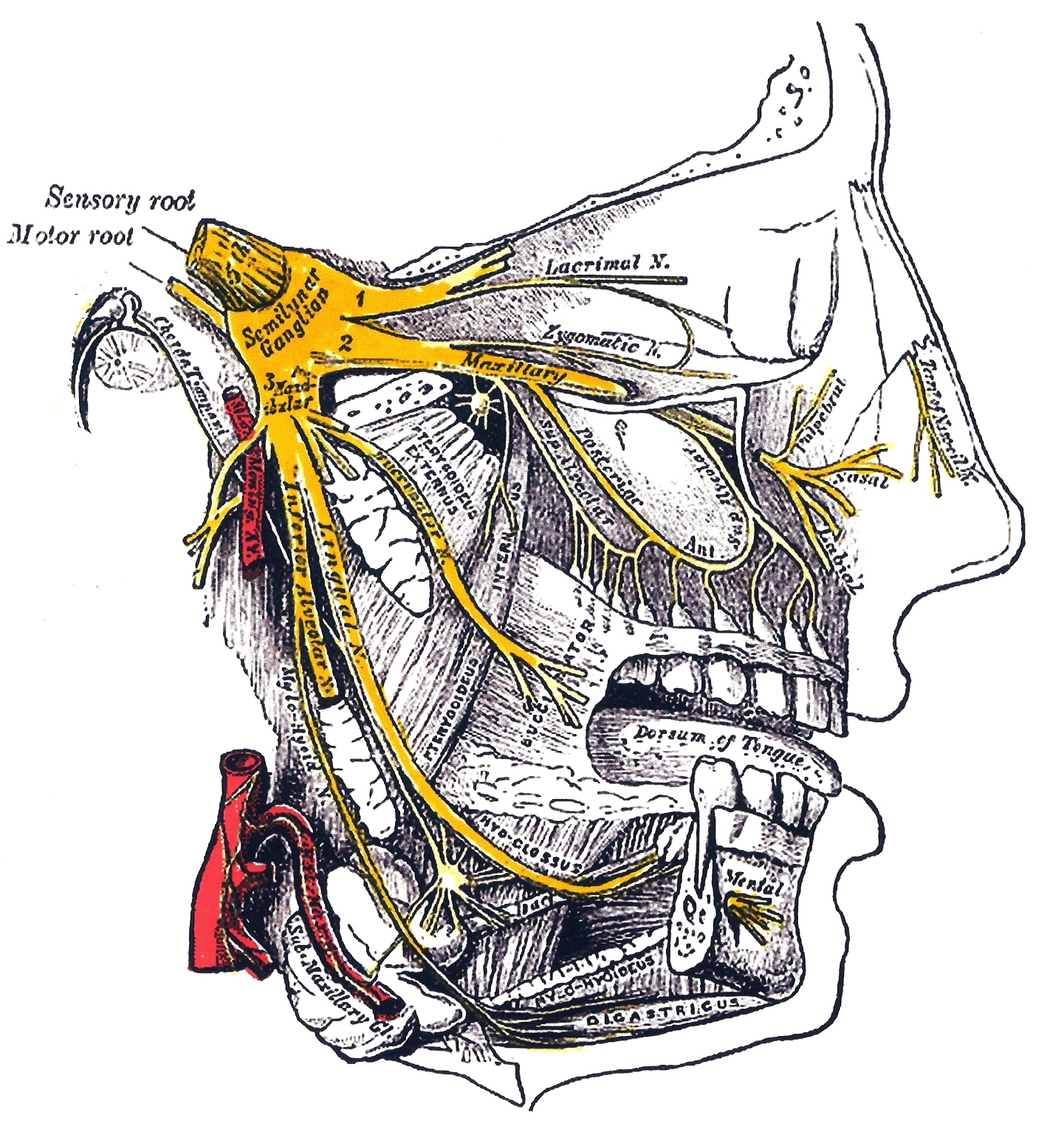Have you ever heard of trigeminal neuralgia? It is a relatively rare, but painful condition that affects the nerves between a person's face and their brain. Most commonly those affected are persons over fifty years of age--and more women than men are affected. This condition is also referred to as tic douloureux. The causes of this condition include, but are not limited to, stroke, injury, or brain lesions.
Those affected with this condition typically experience short, mild attacks . Simple everyday personal care such as shaving or brushing teeth can be excruciating! A doctor will suspect this condition if a person:
Sources: Mayo Clinic; gstatic.com;Wikimedia
 |
| Trigeminal nerve=area in yellow |
Those affected with this condition typically experience short, mild attacks . Simple everyday personal care such as shaving or brushing teeth can be excruciating! A doctor will suspect this condition if a person:
- --experiences shock--like jolts of pain intermittently in areas of the face
- --the location of the pain is important; it's tell tale if someone is truly affected by this condition
- --the circumstances that trigger the pain also help to indicate whether or not this is trigeminal neuralgia
A neurological exam will be an important part of the diagnostic process. An MRI may also be ordered to rule out other possible conditions.
This condition can be treated with medication, surgical procedures, and injections. There are also
alternative and complementary treatments available, including biofeedback, vitamins or nutritional therapies, and acupuncture. A new ultrasound therapy device, known as Pain Shield® was made available in the last year and may offer hope to those who have not had success with other types of treatments.
Sources: Mayo Clinic; gstatic.com;Wikimedia
Comments
Post a Comment